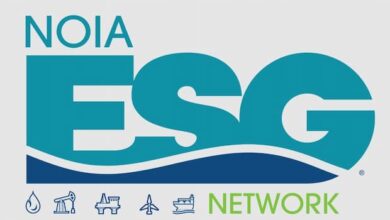Changes in Indian customs affect drilling operations
The government of India recently issued a clarification and notification related to the transfer of oil and gas equipment from one contract to another.
Previously, the Indian government required that equipment be exported out of the country and imported back in before work could commence under a different contract.
The result of this ruling meant that the industry faced increased costs due to lost time, as well as transfer of equipment and customs clearance costs.
A team headed by Transocean successfully lobbied for a change in this rule. The resulting clarification dismisses the need for first exporting equipment before it can change contract.
BSEE, USCG Sign agreement on offshore oversight
The US Bureau of Safety and Environmental Enforcement (BSEE) and the USCG have announced a memorandum of agreement (MOA) to strengthen their relationship on the management of the Outer Continental Shelf (OCS).
The two have shared responsibility for ensuring the regulation of safety management systems on the OCS. The MOA will be used to establish a process for the identification of offshore safety and environmental management requirements within the jurisdiction of both agencies and assist with the development of joint policies and guidance. The MOA also ensures that future regulations, policies and guidance are enforced consistently by both agencies.
IADC issues letter on illinois hydraulic fracturing act
On 4 April, IADC issued a letter to Democratic Illinois state representative John Bradley regarding the proposed Amendment No. 3 to House Bill 2615, the Illinois Hydraulic Fracturing Regulatory Act.
The letter highlighted specific concerns expressed by IADC members on the proposed legislation.
It pointed out provisions of the subject amendment to the bill that stand to compromise the safety of oil and gas drilling operations in Illinois.
The letter also noted that such regulations could decrease the attractiveness for investment by operating companies and willingness of experienced drilling companies to operate in the state.
New US strategy for the arctic
On 10 May, US President Barack Obama signed the National Strategy for the Arctic, which articulates the US strategic priorities in the Arctic. It joins similar strategies distributed from fellow Arctic Council colleagues in Canada, Norway, Denmark, Iceland, Finland, Russia and Sweden.
It describes the changing conditions in the Arctic and discusses guiding principles to both protect the environment and indigenous communities, along with advancing economic and energy development.
Additionally, the strategy defined three lines of effort that incorporate the broad range of current US activities and interests in the region. They include advancing US security interests, pursuing responsible Arctic region stewardship and strengthening international cooperation.
New medical examiner form required by FMCSA
In the 10 May 2013 Federal Register, the Federal Motor Carrier Safety Administration (FMCSA) proposed to require certified medical examiners (MEs) performing physical examinations on drivers of commercial motor vehicles (CMV) to use a newly developed Medical Examination Report (MER) Form, MCSA–5875 and to use Form MCSA–5876 for the medical examiner’s certificate (MEC).
In addition, MEs would be required to report results of all completed commercial drivers’ physical examinations to the FMCSA by close of the business on the day of the examination. This would include all CMV drivers who are required to be medically certified to operate in interstate commerce.
Reporting of this information would be accomplished by completing a CMV Driver Medical Examination Results Form, MCSA–5850, via individual password-protected National Registry web accounts.
For holders of CDLs and CLPs, FMCSA also proposed to electronically transmit driver identification, examination results and the driver’s restriction system to the State Driver Licensing Agencies (SDLAs). This includes those that have been voided by the FMCSA because it finds that an ME has certified a driver who does not meet the physical certification standards.
The agency would also transmit medical variance information (exemptions, skills performance evaluation certificates and grandfathered exemptions) for all CMV drivers electronically to the SDLAs.
USCG Issues new marine casualty report forms
The US Coast Guard (USCG) has revised Form CG-2692 (Report of Marine Incident, Injury or Death) and Form CG-2692B (Report of Required Chemical Drug and Alcohol Testing Following a Serious Marine Incident). These new forms do not include substantial changes from the previous versions, which can still be used.
National pollutant discharge permit re-issued
The US Environmental Protection Agency (EPA) has re-issued the National Pollutant Discharge Elimination System (NPDES) Vessel General Permit (VGP), which authorizes discharges incidental to normal vessel operation for non-military and non-recreational vessels that are at least 79 ft in length when operating as a means of transportation within the three-mile territorial seas of the US.
This final permit issuance of the revised VGP, which will replace the one issued in December 2008, imposes a few more requirements, such as prescriptives technology-based effluent limitations for oil-to-sea interfaces and numeric technology-based effluent limitations that are applicable to vessels with ballast water tanks. It has an effective date of 19 December 2013.
Vessels, including MODUs, seeking to renew or obtain coverage must submit a notice of intent at least 30 days prior to obtaining/renewing coverage.
Click here for IADC’s 2009 guidelines for MODUs subject to the VGP. Updated guidelines should be available by September.




